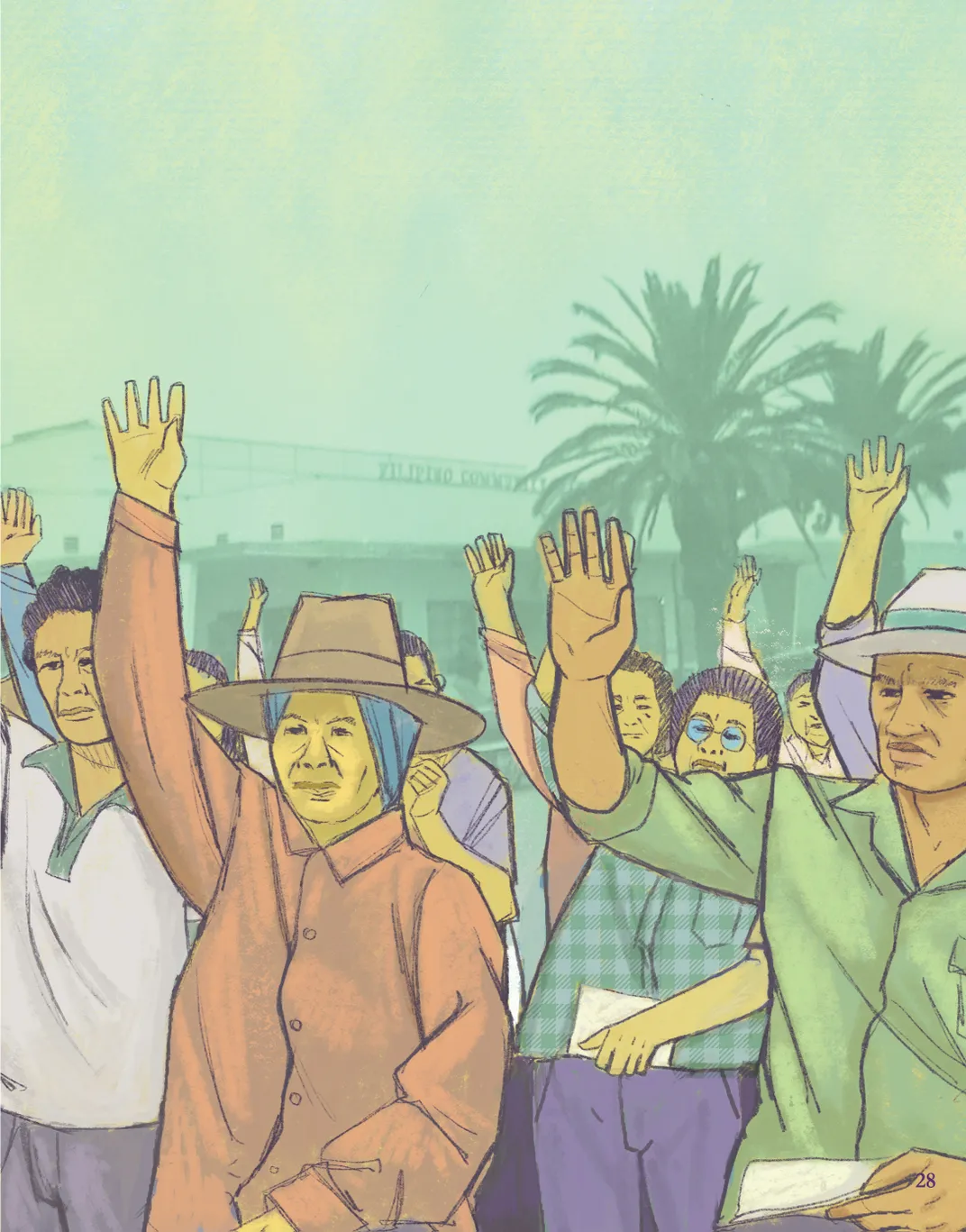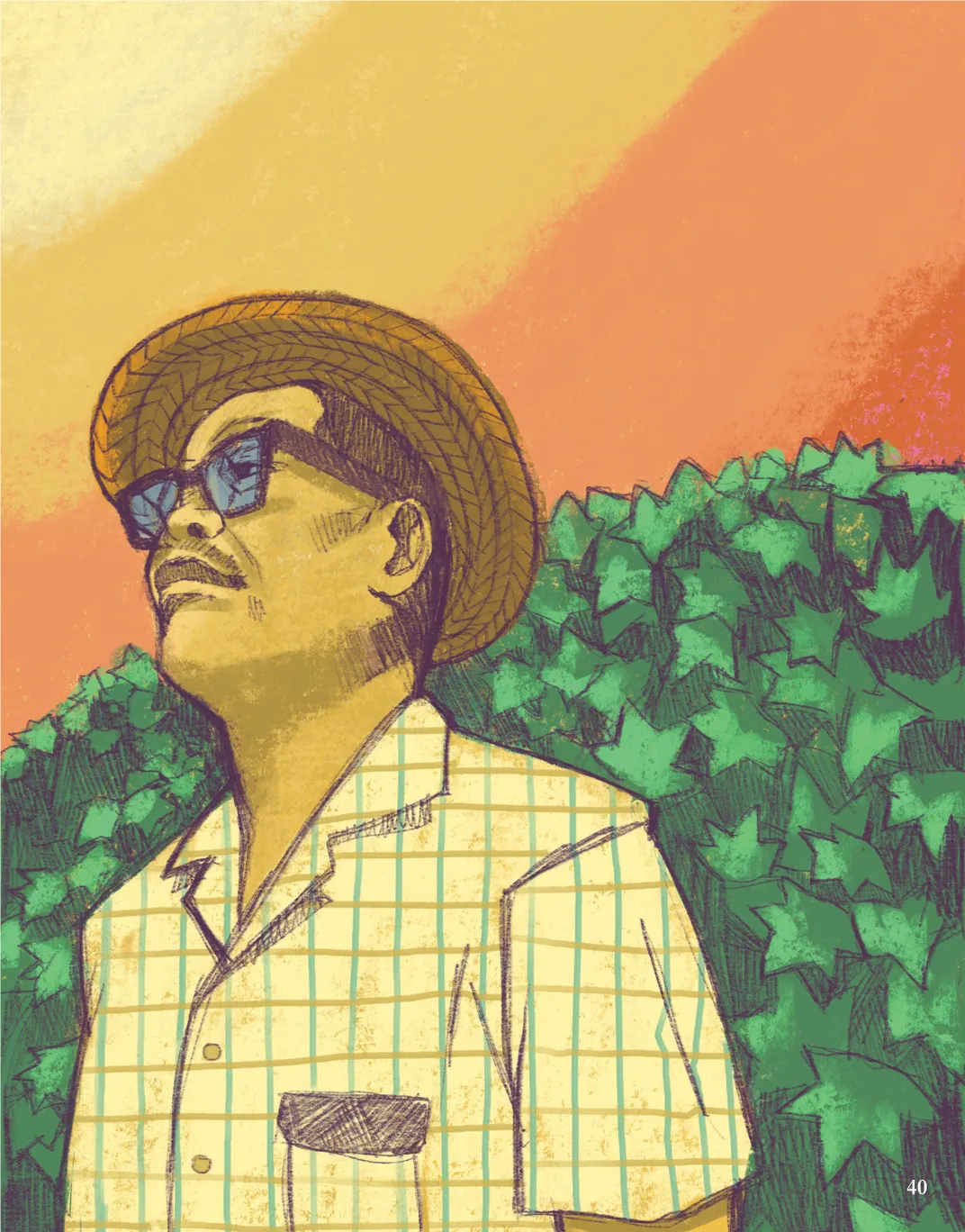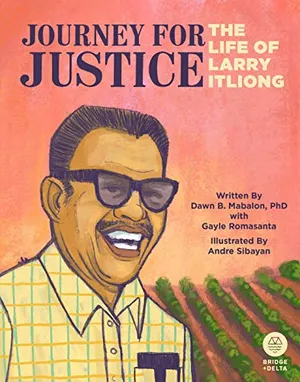Why It Is Important to Know the Story of Filipino-American Larry Itliong
Author Gayle Romasanta is on a crusade to recover the farm worker’s story, empowering young leaders to follow in his footsteps
:focal(1759x1173:1760x1174)/https://tf-cmsv2-smithsonianmag-media.s3.amazonaws.com/filer/52/3d/523da825-4f79-4a10-8533-7f20fca8845e/larry-itliong-fanhs-nat-copy.jpg)
In the late 1970s, my family and I lived in an apartment on South San Joaquin Street in the Little Manila neighborhood of Stockton, California. My family wasn’t unique.
The Central Valley city was once home to the largest population of Filipinos in the 20th century. If most Filipino-Americans did a little digging, they would likely find that their relatives and direct ancestors visited Stockton or called Little Manila home. Maybe they strolled through Little Manila along El Dorado Street and walked over to Cirilo Juanitas’s Candy Store and Pool Hall, or had their clothes tailored at Los Filipinos Tailoring shop. Maybe like my family, they ate at Emerald’s Restaurant, on the corner of Hunter and Lafayette Street, which was formerly the Filipino Recreation Center.
They could have bumped into the renowned writer Carlos Bulosan, author of America Is in the Heart, eating lunch at the Lafayette Lunch Counter, where the owner Pablo “Ambo” Mabalon usually gave the writer his meals for free. Perhaps they were friends with the Stockton resident and one of the most important Filipino American leaders of the 20th century, Larry Itliong. It’s possible. As the late and great Filipino-American historian Dawn Mabalon and author of Little Manila Is in the Heart: The Making of the Filipina/o American Community in Stockton, California, always said about her own research: “All roads lead to Stockton.”
Sadly, Mabalon died on August 10, 2018. But her final project, a children’s book called Journey for Justice: The Life of Larry Itliong, which I co-authored, and is illustrated by Filipino-American artist Andre Sibayan, is based on her research and curated historical photographs.
Journey for Justice: The Life of Larry Itliong
Filipino-American historian Dawn Bohulano Mabalon, writer Gayle Romasanta, and illustrator Andre Sibayan tell the story of the labor leader and co-founder of the United Farm Workers Larry Itliong and his lifelong fight for a farmworkers union. This is the first book written about Itliong and the first nonfiction illustrated Filipino-American history book for children.
Larry Itliong immigrated to the United States in 1929 when he was 15 years old and immediately began working as a farm laborer and in the salmon canneries of Alaska. His heart was set on becoming an attorney and seeking justice for the poor. But the poverty he lived through and violent racism he and Filipinos encountered all but barred him from getting the education he initially sought. He never became an attorney, but he became a storied Filipino-American labor leader and organizer, leading labor organizations in Alaska and throughout the West Coast.
He called Stockton his hometown while he recruited more than a thousand new members to join the Agricultural Workers Organizing Committee (AWOC). He was so good at what he did, union leaders asked him to leave for Delano to organize Filipino grape workers. It was there in Delano on September 7, 1965, a small town four hours outside of Stockton, that he convinced the grape workers at Filipino Hall to vote to go on strike. The next day, the Delano Grape Strike began, and more than 2,000 Filipino farmworkers, members of AWOC, marched off the vineyards, demanding $1.40 an hour, 25 cents a box, and the right to form a union.
Itliong soon contacted Cesar Chavez and asked Mexican farmworkers to join the strike. He understood that all workers had to stand together in their fight for justice. Chavez didn’t think his people were ready to go on strike. But he took Itliong’s request back to the National Farm Workers Association (NFWA), and along with Dolores Huerta spoke to the nearly one thousand NFWA members. In a unanimous vote, the Mexicans joined the Filipinos. A year later, AWOC and NFWA merged to become the United Farm Workers (UFW).
The Delano Grape Strike lasted for five years. As director of the UFW, recognition grew for Chavez, who took the limelight, but co-founder and former assistant director Larry Itliong has since been cast into the historical shadows. And significantly, while this strike was one of the most important social justice and economic movements in American history, many, including the Filipino-American community, are unaware of Itliong’s crucial efforts in organizing the strike and supporting the workers.
Under Itliong's direction, Filipino Hall became the union hall and strike kitchen, Mexicans and Filipinos cooked for one another, and picketed together, eventually persuading grocery stores to stop carrying Delano grapes. Itliong also fiercely negotiated for the funding and construction of Agbayani Village, a senior home for retired farmworkers—the Manongs—the Filipino elderly who had no family, to be located at the UFW Headquarters at Forty Acres, which is now part of the National Park Service. Itliong negotiated with the growers that a percentage of each grape box picked would support the retirement facility. Over the course of five years, the strike garnered international recognition and was supported by major celebrities and politicians of the time, with people from across the U.S. donating money, food and clothing to the UFW.
In the end, everyone won. In 1970, more than 30 Delano grape growers in Delano agreed to a pay increase for the workers, as well as medical insurance plan and established controls over toxic pesticides.
But why is it important to remember this history?
Teaching Filipino-Americans—specifically the youth—about our collective history is about “battling for the Filipino-American soul,” says Dillon Delvo, executive director of the advocacy group Little Manila Rising in Southside Stockton. Without understanding our history, Filipinos are content to just fill the economic and labor needs of its current oppressor, without critical analysis of who they are. “When we talk about the battle for our souls, it’s about standing together, despite this history, despite compounded generational trauma. [The battleground] is where you stand with your people and acknowledge this marginalized history. It’s only when we acknowledge this shared history, can we then stand together and fulfill our own needs and our own dreams.”
Founded in 1999 by Delvo and Mabalon, Little Manila Rising’s original goal was to save Stockton’s Little Manila neighborhood and have it recognized as a historic site.
“We told the powers that be, we live here. We have a right to say we don’t want these buildings destroyed,” Delvo says. “No one thought the children of the farmworkers would demand this right.”
The nonprofit has grown into a hub of Filipino-American arts and culture led by youth educators, with an after-school program that introduces students to the history of their marginalized community. The nonprofit was able to save the last three remaining Little Manila buildings and earn the area a historic landmark designation.
Delvo’s passion for this cause likely comes from his father, labor organizer Rudy Delvo. It was the elder Delvo who met with Itliong and successfully recruited him to join the Agricultural Workers Organizing Committee.
“We’re doing the work. We are on the battlefield with this book,” Delvo says about Journey for Justice. The book has made its way into curricula at UCLA, San Francisco State University, the University of Michigan, and school districts in California for the fall of 2020. Locally, Little Manila Rising has worked it into their after-school program and donated a copy to every school in Stockton.
“If we don’t have the proper context of who we are as a people, in the same way the Mexican-American community understands Cesar Chavez and his legacy as a standard for youth to live up to, then what do Filipino-Americans live up to?” Delvo asks. “What is our standard?”
“The proper response to Dawn and Larry Itliong’s legacy is to learn your history, tell your story, and empower your community,” he continues. “We as a community need to read this history together and then answer this question: how do we form Filipino-American communities for the future where our youth understand the legacies we need to live up to?”
The answer is quite clear for Little Manila Rising: focus on the youth and teach them their history to create the heart and soul of the community’s future. Delvo understands it’s a generational shift. It takes time. While the battle hasn’t been won yet, it all starts by reading about Larry Itliong and Filipinos in the farm labor movement.
My own history of art, writing and politicism propels me forward on a Journey for Justice national book tour. I’ve made it to four cities so far: Delano, Seattle, New York and Washington, D.C. I have more than a dozen stops left, taking me to Texas, Alaska, up and down California, to the Midwest and back to the East Coast. At each stop, I talk about Itliong and why every Filipino-American should know who he is. National and local community leaders honor and celebrate both Itliong and Mabalon’s work and the legacy they leave behind at each tour stop.
This wasn’t the plan when I started this work. There were no books that my children could read specifically about Filipino-American leaders. In 2016, I asked Mabalon if she would collaborate with me on the children’s book about Larry Itliong. She was the only researcher I knew who could write this book. She was working on her own Itliong project for college students. I told her that this book was not just for my children, but for other Filipino families and teachers as well. She agreed. With illustrator Sibayan, we began a fundraising campaign to get the book done, along with jump-starting an eight-book series about Filipino-American leaders for young students in fourth through ninth grades. After more than 500 contributors donated to an online fundraising campaign, we set to work, and, in less than two years, the book was done.
On the day I mailed the final edits to the printer, Mabalon died. I had just gotten off the phone with her, our last celebratory meeting. She was vacationing in Kauai; she went snorkeling and had an asthma attack. Mabalon’s legacy in our community is still felt. Bridge and Delta Publishing (the publishing house I created) worked closely with many organizations to bring the national book tour to life. One main organization was the Filipino American National Historical Society, which was more than willing to assist, as Mabalon was a FANHS National Trustee and served as the organization’s National Scholar for more than a decade. Other key local nonprofit Filipino-American and Asian-American organizations have supported and sponsored the tour at every stop throughout the U.S. We have a public relations agency, Filipina-owned Papalodown Agency, which has given many hours to our cause. A free comprehensive Journey for Justice teachers’ guide, created by Pin@y Educational Partnerships San Francisco, is provided to each community. Pinay rapper Ruby Ibarra, an artist and performer at the 2019 Smithsonian Folklife Festival, features the Journey for Justice book in her live session video for the song “Here.” Through these collaborations, we unite to spread the history of Larry Itliong.
In the early stages of drafting the book, Mabalon and I joked it was a movement we were creating. It is true about her research and this movement too, that all roads lead to Stockton. And it is through Mabalon that I also came to understand that our collective memory must always hold the story of Larry Itliong. I know she would want me to say to the communities I visit, remember our history, know and understand who Itliong was, and tell your own story. Know history, know self.
Our immigrant histories heal and empower us to give back to our communities. We learn the importance of standing together, to recognize the need to work in solidarity with other immigrant and marginalized communities. Many have started and sustain this work already. We must make sure to carry it to the youngest in our communities.
Gayle Romasanta was born in Manila, Philippines, and immigrated to Stockton’s Little Manila in the late 1970s. She is the co-author of Journey for Justice: The Life of Larry Itliong and the founder of Bridge and Delta Publishing. A free teachers guide is also available.
A version of this story originally appeared in the online magazine Folklife, published by the Smithsonian’s Center for Folklife and Cultural Heritage.
A Note to our Readers
Smithsonian magazine participates in affiliate link advertising programs. If you purchase an item through these links, we receive a commission.






